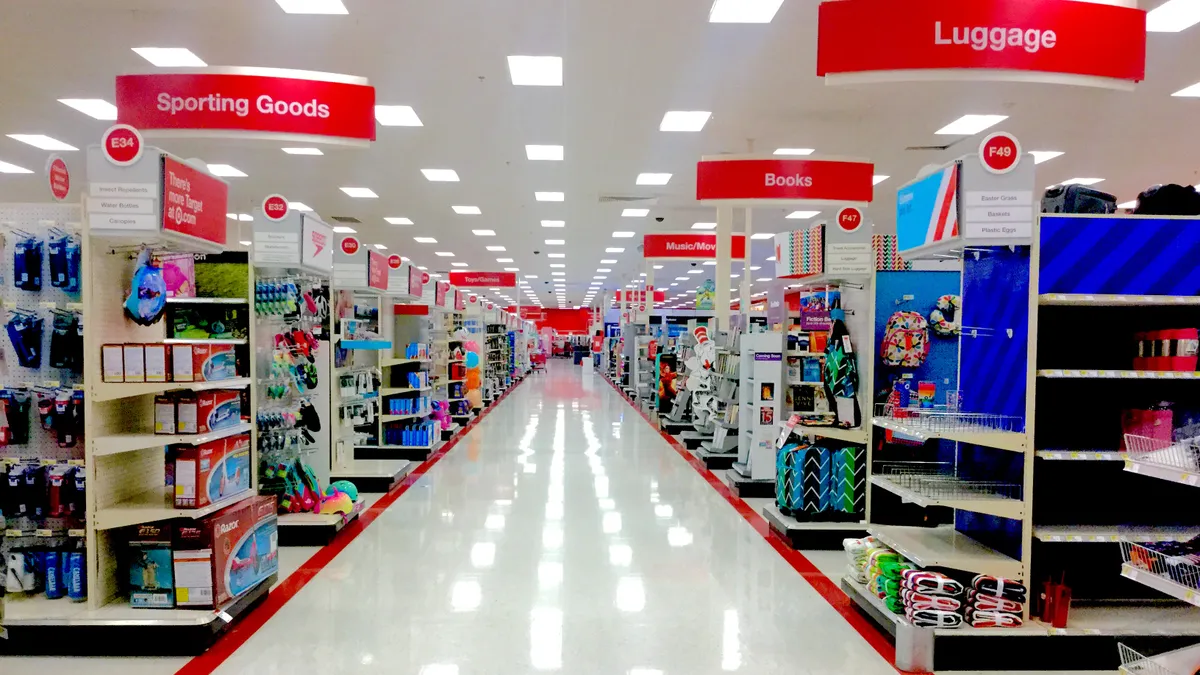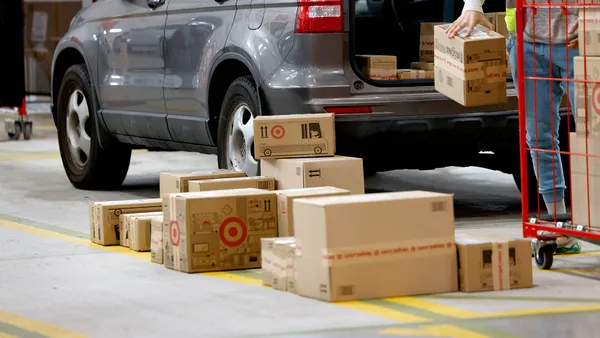Dive Brief:
- Seventy-three percent of retailers consider it a challenge to implement an in-store accept, pick and pack process for online orders, according to a 2020 survey of retailers by Forrester that was presented at an IBM supply chain webinar last week.
- Omnichannel operations are becoming increasingly important in retailers' efforts to weather the coronavirus pandemic, according to Brendan Witcher, a VP and principal analyst for Forrester. "Even the big players are recognizing this is what's getting them through [the pandemic]," Witcher said during the event, referring specifically to recent earnings from Walmart and Target.
- Another survey cited by Witcher, conducted by CommerceNext, found that 63% of retailers launched curbside pickup programs during the pandemic.

Dive Insight:
Each step of the accept, pick and pack stage of in-store fulfillment requires retailers to make adjustments to their operations, according to Mark Clendenin, a partner at Red Banks Consulting who has worked with clients on standing up omnichannel operations.
"Accept, pick and pack is really hard, and it starts with ... the technology to know where to direct that pick and pack," Clendenin said.
This is challenging, because the inventory in a store is much more fluid than in a warehouse, he said. Retailers have to consider the fact that inventory can be in a customer's cart before checkout and still be listed in the inventory system.
"Historically, people have not had very accurate inventory in their stores," Clendenin said. Stores will need to integrate their in-store inventory with a point-of-sale system. This is not just insight into the inventory at the store level but how the inventory varies across stores.
Once inventory is understood, a retailer also has to set up workable criteria for allocating orders to stores. Geographic considerations help with speedy fulfillment and delivery, but inventory should also play a role in the determination. Clendenin said he has seen a retailer set up a fulfillment system in which the store closest to the customer received the order. That resulted in one or two stores getting most of the orders.
"And they couldn't accept it, and the reallocation process would fail," he said, adding that many systems struggle with reallocation, the process of sending an unaccepted order to the next available store. The orders would then end up in "no man's land," leaving retailers with the task of manually finding orders, Clendenin said. An order management system could determine if an order is not accepted and look for the next logical place to ship from.
Picking and packing in-store goes beyond technology: In-store fulfillment also requires space. And retailers have to decide if they're going to organize operations that are not, historically, set up to be a warehouse to fulfill online orders.
"Where can you get some dedicated space to do the pick and pack?" Clendenin said. "When do you do the pick and pack?"
The accept-and-pick stage of the process is usually the same in most omnichannel processes, but the pack process will change depending on if a retailer is doing curbside pickup, ship-from-store or buy online pickup in store. Shipping from the store will require the retailer to get the shipping label from its OMS and meet the shipping deadline. Curbside pickup, meanwhile, can require a series of communication with customers that, if not done well, can leave them sitting in the parking lot for hours and even damage reputation.
With all of the complicated process to go through, why bother with in-store fulfillment? In many cases, the store is going to be closer to the consumer than a warehouse. So, it can result in cheaper and faster deliveries.
It also helps retailers use more of their inventory by offering it through multiple channels and helping them to avoid inventory liquidation — particularly in an environment where consumers aren't frequently shopping in stores. And major retailers deploying the strategy have seen operational benefits. Target, for one, has used store-based fulfillment for several quarters, resulting in a 30% reduction in cost per order for digital fulfillment in the second quarter.
This story was first published in our weekly newsletter, Supply Chain Dive: Operations. Sign up here.













